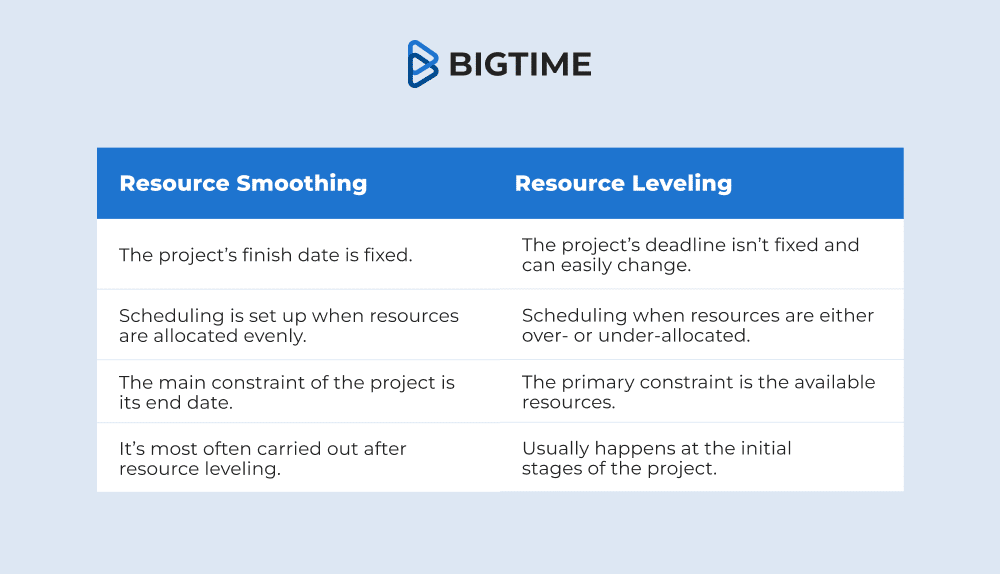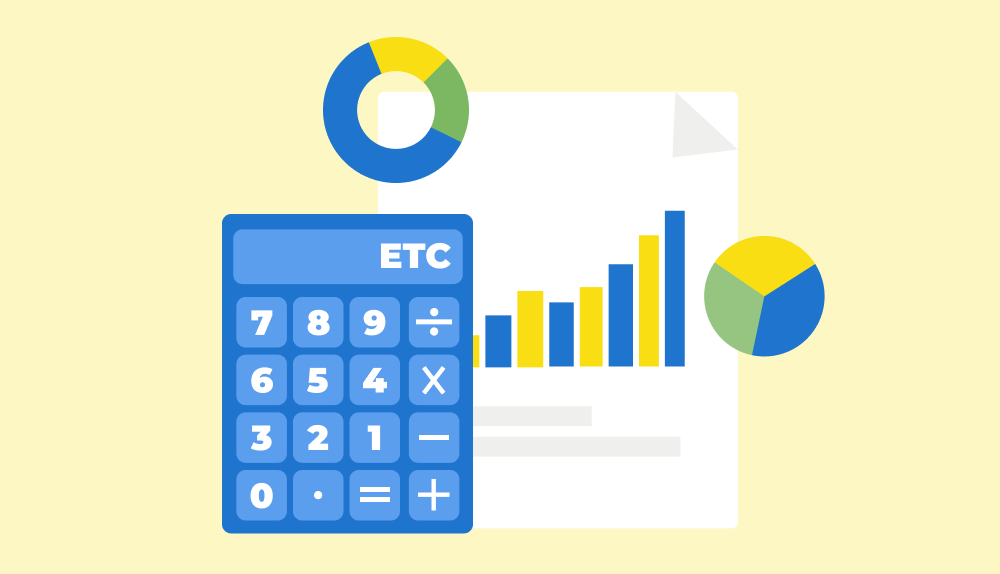What can be done if you experience resource shortages during a project?
Resource leveling is a helpful approach we’ve covered. However, if your project has a deadline that you can’t stretch by an inch, what you need is resource smoothing.
Keep reading to learn what resource smoothing is, how it differs from resource leveling, and how to improve your project profitability with it.
What is resource smoothing?
Also called time-constrained scheduling (TCS) or resource-constrained scheduling, resource smoothing is a product management tool for optimizing resources in the project.
The idea behind resource smoothing is adjusting all the activities of the scheduled project to the requirements for resources, ensuring that they don’t go beyond the resource limits already pre-defined during planning.
At the beginning of a project, you set time schedules and then can adjust resources to manage limited availability in a given time. The objective of this technique is to complete the work within the required end date and at the same time, avoid the ups and downs in resource utilization.
What can you gain from resource smoothing?
Resource smoothing is one of the optimization techniques that help you adjust your project activities to match the available resources. It ensures that the project gets completed within the resources you budgeted for it. The key goal of resource smoothing is uniform utilization of resources and timely project completion.
Typically, resource smoothing is applied after resource leveling to optimize project costs and use your resources more efficiently (this is where employee utilization rate comes in handy).

Ultimately, resource smoothing is a great method for dealing with the unavoidable delays in projects we know all too well. By using resource leveling together with resource smoothing, you can reconcile time constraints and resource limits while delivering high-quality work.
Resource Smoothing vs Resource Leveling: What’s the Difference?
The project end date is the main difference between these two tactics.
In resource leveling, the project’s deadline isn’t fixed and can easily change. In resource smoothing, on the other hand, the finish date needs to remain the same. Resource smoothing also allows for occasional pauses in activities within the specified timeframe.
In resource leveling, you tend to schedule when resources are either over- or under-allocated. Contrary to that, resource smoothing scheduling is set up when resources are allocated evenly.
The primary constraint in resource leveling is the available resources. In resource smoothing, the main constraint of the project is its end date. Resource leveling usually happens at the initial stages of the project, and resource smoothing is most often carried out after resource leveling.

Resource Smoothing Flow Example
Step 1: Critical Path Method Application
A project manager can start with the critical path method to analyze the project and determine its course. The critical path method’s main objective is to determine the resource constraints for your project, which can also be used in the resource smoothing process.
Step 2: Resource Leveling
The next step is the application of resource leveling. Now you can see the maximum number of resources per task. To reduce the allocation of resources in places where you don’t need them, you will need to expand the duration of a task. Note that this will increase the duration of the entire critical path.

Step 3: Resource Smoothing
After applying resource leveling, it’s time to focus on the end date and apply resource smoothing. After following all the steps, you get a resource-constrained schedule where resource allocation is fully optimized.
4 Resource Smoothing Strategies
1. Project Prioritization
Imagine that you’re approached by two different clients with two different projects. It just so happens that you have enough available resources to complete only one of them.
So, which one should you proceed with?
The one that gives you a better profit margin and increases your bottom line. Calculate the costs of work for a given project, establish the profit margin, and come up with an estimate for profits the chosen operation might generate. Then, choose whichever option is better for your budget.
But how can you know that if you don’t have a tool that allows you to simulate different scenarios with different hourly rates?
This is where resource management software comes in handy. It gives you all the insights for resource leveling and allocations to prioritize projects correctly.
2. Clarity About Employee Utilization Rate
If you put someone in a demanding project, placing them in another challenging project with overtime is a bad idea. Planning employee availability with their capacity and motivation in mind is critical to maintaining a high level of work delivered.
Their availability must be visible to other managers, so the employee never ends up in a stream of demanding projects. Employees will also be much more motivated due to the predictability of their responsibilities for the weeks and months to come.
3. Bird’s Eye View of Your Project and Company
Having a bird’s eye view of everything happening in your company – including project profitability, resource allocation, and utilization rate is critical.
That way, you can focus on areas where resource smoothing can make a real difference. Otherwise, you might apply resource smoothing where it’s not needed or not going to make a big impact on your profit margin.
4. Excellent Financial Reporting
Financial reports show you whether the resource smoothing is working and what benefits it may be bringing.
It’s common that when you’re pressured by a deadline, you stop paying attention to the actual resources involved. This might lead you to get experts with very high hourly rates and dramatically reduce the project’s profit margin.
Reporting comes in handy here because you can learn whether what you did had an impact on the profit margin – and by how much. You will get all the insights and lessons learned to use in the future. You need these insights to use them in your next project and improve how you work.





